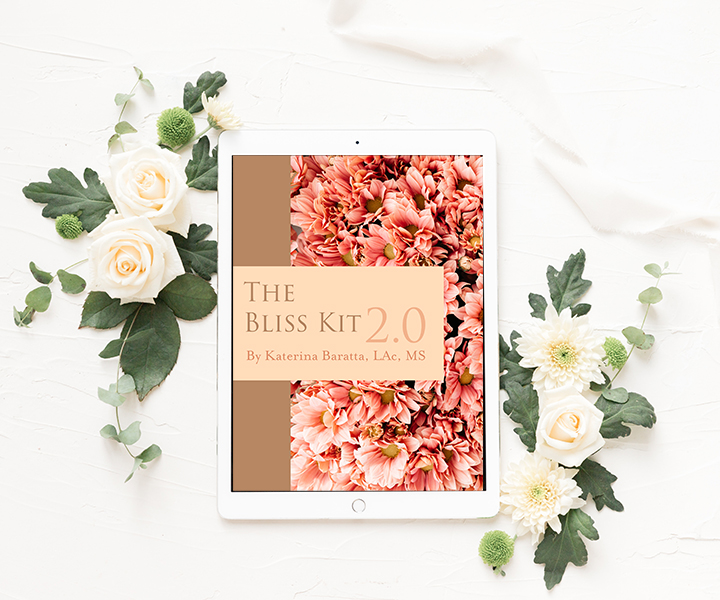Mindfulness for Trauma: How to Stay Present Through a Trauma Response
You’ve heard the masters say it, over, and over, and over again:
“The path out of suffering is to stay present.
Be here now.
Now is the most powerful moment there is.
Life is only ever now.
The past and future are just projections of your mind.”
And all of this is true.
But when trauma gets activated, it feels impossible to stay present, doesn’t it?
Even if we’ve had experiences of flow, spiritual awakening, or moments of supreme bliss, they never seem to last.
At some point, old patterns are going to show up that pull us right back into the emotional trenches we thought we had overcome.
In fact, when speaking of spiritual awakening, one of the most common questions people ask is: “How can I stay there? How can I keep that feeling? How can I stay present, forever?”
And the answer is, that while some people have an experience of awakening that is so profound that their consciousness stays altered forever, the shift into present consciousness is more of a gradual progression for the rest of us.
And the reason that we keep getting pulled back into our old patterns is trauma.
We all have trauma to a greater or lesser degree.
In fact, our bodies were built for it.
Because trauma happens whenever we’re in a stressful situation that we cannot escape, and don’t have the opportunity (or know-how) to process out afterwards.
When we find ourselves in circumstances of inescapable threat, stress patterns get wired into our nervous system.
And anytime we find ourselves in a similar situation in the future, even one that isn’t actually dangerous, those stress patterns automatically get reactivated.
Heart rate goes up.
Breath becomes fast and shallow.
Blood rushes out of organs and into muscles so we can fight or flee as needed.
We don’t even realize it’s happening on a conscious level.
But the next thing we know, our mind is telling —or, more like shouting— stories at us about how everything that went wrong in the past is about to happen again, or worse.
We might not even be aware of the memories that programmed this response, but the visceral experience is still there.
And all we can focus on in this moment is the alarm bells that are reverberating through our whole system.
Which means we aren’t present in the moment we’re in. Instead, we’re trying to escape it.
We’re seeing and feeling flashes from the past, flitting across the screen of the mind, and projecting them into an unknown future.
This is a survival mechanism.
What the mind-body system is trying to do when this happens is to motivate us to find a way out of danger.
But the problem is that we are operating on autopilot in these moments, imagining that the past is happening now, which only serves to reinforce and strengthen those trauma patterns in our neurology.
Yet, it’s only by staying present through our trauma that we are able to heal and create new patterns.
So how do we stay present and mindful when our biologically-ingrained reactions are specifically designed to pull us out of the present moment?
Two things.
The first is practice.
The second is surrender.
Practice allows us to establish new patterns in the nervous system, and surrender allows us to be with what is so it has the opportunity to process out.
Let’s talk about how to apply these in your life, because although they’re theoretically simple, the doing of them can be a bit more tricky.
Try to practice presence (aka mindfulness) as much as you can in day to day life, especially when you’re in a calm, non-threatening environment.
In the beginning it is helpful to set aside specific times or tasks that you intend to do mindfully, like eating breakfast, brushing your teeth, or doing the dishes.
Going in, know that just like any meditation practice, you won’t do it perfectly.
Perfect isn’t the point. The point is practice.
Your mind will wander, it’s what the mind is designed to do.
Your job is to notice when your mind wanders, and gently let go of your thoughts to refocus on the present moment.
Over time, you won’t need to set aside a specific practice time anymore.
You will just naturally “wake up” to the present moment more often.
This is because the more you practice mindfulness, the stronger the neural connections become that allow you to experience presence.
And the more you practice letting go of your thoughts when you’re not in the midst of a trauma/stress response, the easier it is to let go of your thoughts when you are.
Which brings us to the second thing that helps you stay present through a trauma response: surrender.
This one is really counterintuitive, until you try it a few times and realize how powerful it is.
When you’re in the midst of a stress response, your instinct is to try to change your environment so you can change the way you feel.
The subconscious belief that you cling to in this moment is that the feelings you’re having are bad, and you need to do whatever you can to make them go away.
Surrender doesn’t feel like an option, and yet, it’s the only option that actually transforms the situation.
Assuming, of course, that you’re not actually under threat.
If you’re about to be attacked by a lion, you don’t have to surrender to its jaws.
Please, get yourself out of there!
And then process out the trauma so it doesn’t get stuck in your nervous system.
No, what we’re talking about here is trauma that’s already stuck in your nervous system.
And this trauma is causing your stomach to feel like a ton of bricks, or your heart to feel like it’s being squeezed by a lasso.
It’s what makes your breath quick and shallow.
In some people it can feel like heat rushing up, tension in the shoulders, or some other physical reaction.
The response your body has is unique to you.
But the thing that is universal is that you feel supremely uncomfortable in your body when you’re having a trauma response.
And the fear is that this feeling will stay in you forever if you don’t do something about it.
Not only that, but you want to make it go away as quickly as possible.
So you try to manipulate the people and things around you to help yourself feel better faster.
But the thing is, this feeling is inside of you.
And so long as you are safe, there isn’t actually anything to fight against.
You project your feelings onto your surroundings to try to gain some control over the situation.
Meanwhile, what you’re really doing is fighting against the feelings inside of you.
And all you’re doing by fighting against your feelings is creating more of a war inside of yourself, and more pain.
Strange as it sounds, suffering stops when you allow yourself to be present with it.
The physical pain won’t go away right away.
In fact, your physical reactions might increase as the energy you’ve been resisting and pushing against is finally allowed to flow.
It’s not unusual to feel the tension in your body even more strongly, or to find yourself sobbing, shaking, gagging, coughing, or even laughing when you finally surrender to your emotions.
All sorts of physical reactions can come up.
It might not sound pleasant, but it’s how your body discharges the uncomfortable energy that’s been stored in there for so long.
In order to be released, it has to be felt.
But when you surrender to it, you’re letting go of emotional resistance, which means that the physical experience is all that’s left.
And the strangest thing of all, is that when you let yourself feel what you’re feeling, you suddenly realize that it’s not bad.
It just is.
So take the risk.
Just for a moment, stop taking your mind so seriously.
Don’t judge this moment and these feelings as bad.
Don’t assume that what’s happening “shouldn’t” be happening.
Allow the feelings to run through you.
Stay present with what is.
Allow yourself to risk feeling bad, if that is how you feel right now.
This risk to stay present —to stay with what you’re feeling, even when you’re completely overwhelmed— will change everything.
It seems like such a paradox, but it’s only when you allow yourself to feel bad that you stop feeling so bad.
This is what you were born to do.
This is what you were born to learn.
So just try it.
Don’t think about it anymore.
Surrender to what is, now, and find out for yourself.





